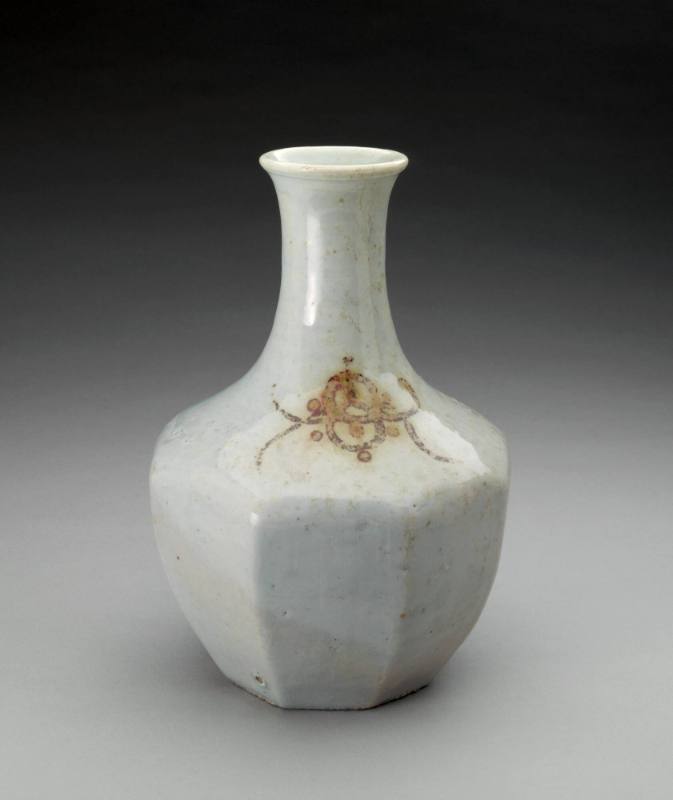
Object Details
Culture
Cara/Panzaleo (Ecuador)
Date
AD 800-1470
Medium
Earthenware
Dimensions
15 15/16 × 4 5/16 inches (40.5 × 11 cm)
Credit Line
Gift of Thomas Carroll, PhD 1951
Object
Number
2006.070.140
BRIEF DESCRIPTIONThis is a Panzaleo ceramic object that is shaped like a funnel, although its exact (…)
BRIEF DESCRIPTIONThis is a Panzaleo ceramic object that is shaped like a funnel, although its exact use is not known.WHERE WAS IT MADE?This object was made in what is now Ecuador.HOW WAS IT MADE?This funnel shape was made using hand-building clay methods. It was decorated with black-on-red resist-painted bands that circle the funnel, applied after it was fired in an earthen pit. To make a design with the resist-painting technique, a waxy, removable substance is painted on where the artist desires his pattern. The vessel is then smeared with a smudgy black organic paint, and the area with the resist is removed, leaving a lighter design showing through the darker background. Resist-painted wares often have faded (or “fugitive”) designs since the dark background color is not as durable as fired slip paints.HOW WAS IT USED?The function of this object is not clear. Its general form resembles Inca libation tubes (paccha in Quechua), which were used to pour libations or liquid offerings, usually of maize beer, to the mother earth spirit (Pachamama). However, this piece is made in local style and does not show Inca influence. The wear on the pointed end may indicate an alternate function as a “clyster tube,” used to administer hallucinogenic enemas, although Tuza and Capulí clyster tubes differ from this vessel in having a less evenly tapered shape. Anal infusions of drugs such as Datura are still used among Amazonian groups during male coming-of-age rituals.WHY DOES IT LOOK LIKE THIS?Notice the small holes in the funnel. These have been drilled on either side of two old breaks, and are evidence of pre-Columbian repairs.ABOUT THE CARA/PANZALEO CULTURE:Centered in Pichincha Province, Panzaleo is a highland culture whose ceramic tradition suggests an Amazonian origin. Characterized by very fine, thin ceramics, negative painting, bands of black and white decoration, and red-and-white color schemes, the most common vessel types include anthropomorphic jars and the annular-based shallow bowls called “compoteras.” Human figures typically depict body-painting. To see another Panzaleo ceramic piece in the Johnson Museum’s collection, search for object number 2006.070.179 in the keyword search box.












